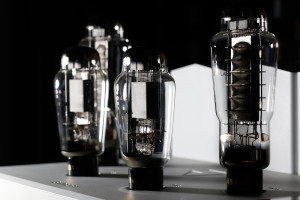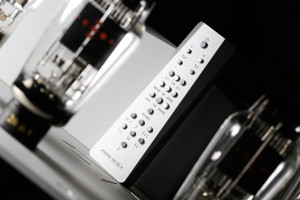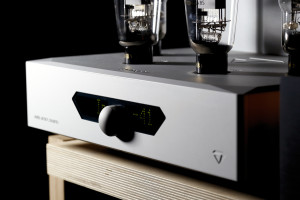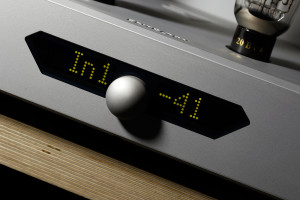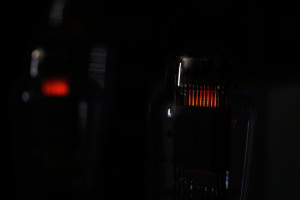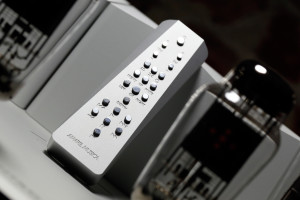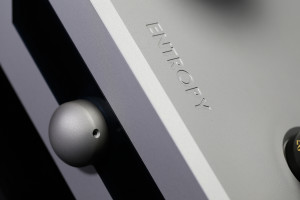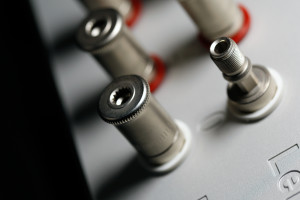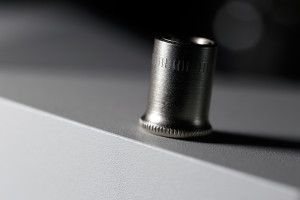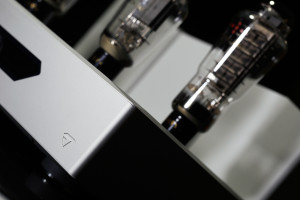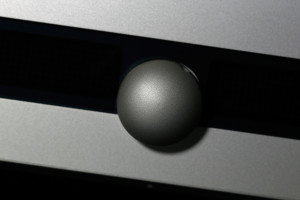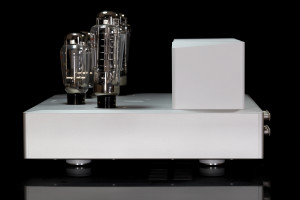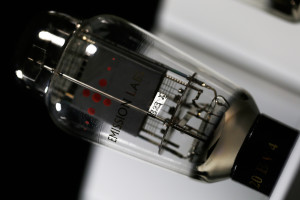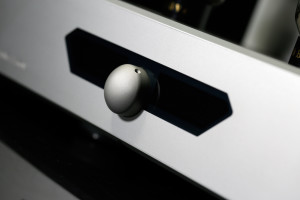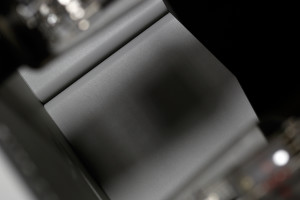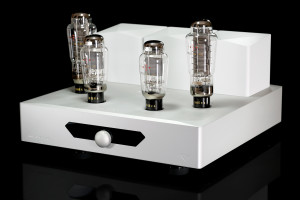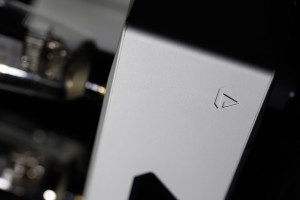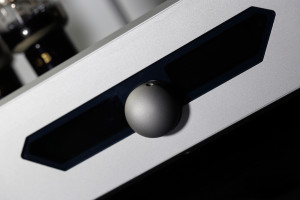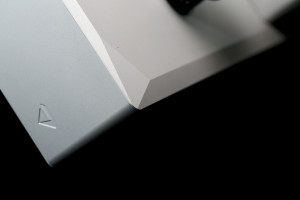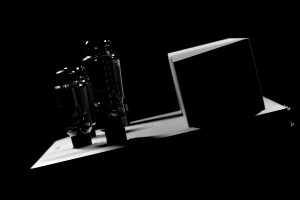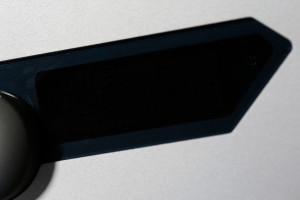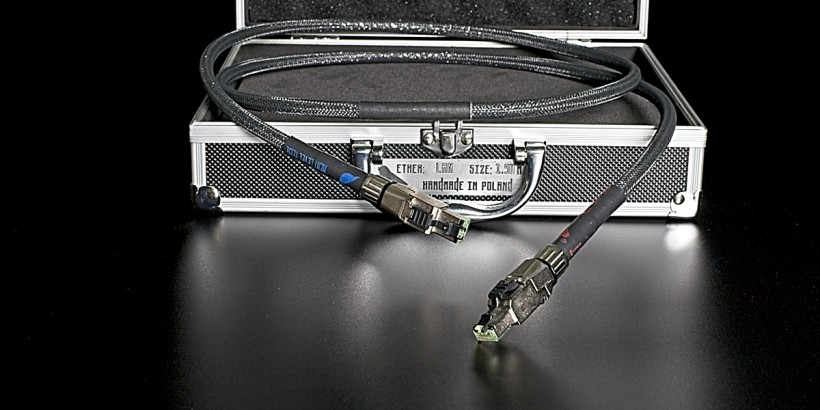One has to start small in order to grow big. Grand things don’t happen just like that, from one day to another. Said process takes time and – i.e. in our hobby – a lot of skill and dedication. As it turns out, Polish Amare Musica manufacture has tons of both. To witness its products is to know why and this review is about that exactly. Amare Musica Entropy integrated amplifier is its main dish. Enjoy.
Introduction
DIY. This one, almost magical short it’s self-explanatory in the audio hobby. DIY stands for do it yourself. To start in a small workshop as a hobbyist, achieve something there and then move on is usually the key. Past this fairly domestic phase, if an outcome is good enough, well-priced and properly introduced to the market, the money-making part can properly kick-off. According to many individuals, yours truly included, that’s the correct order of things. To start a manufacture, yet be solely driven by money and not passion is, well, you know what it is. It doesn’t work usually, at least not when rather pricey products are on the table. With decent connections and marketing skills, one can sell thousands of $10 OEM based earphones rather easily. But a dozen of $10’000 stereo amplifiers made by a newborn, unknown operation? Good luck with that. It’s a process to achieve such outcome. Time, patience, dedication and many wise decisions are badly needed. Lots of devices with such weighty price tags are unsellable, let’s not forget about that. Not every niche audio brand is a successful one.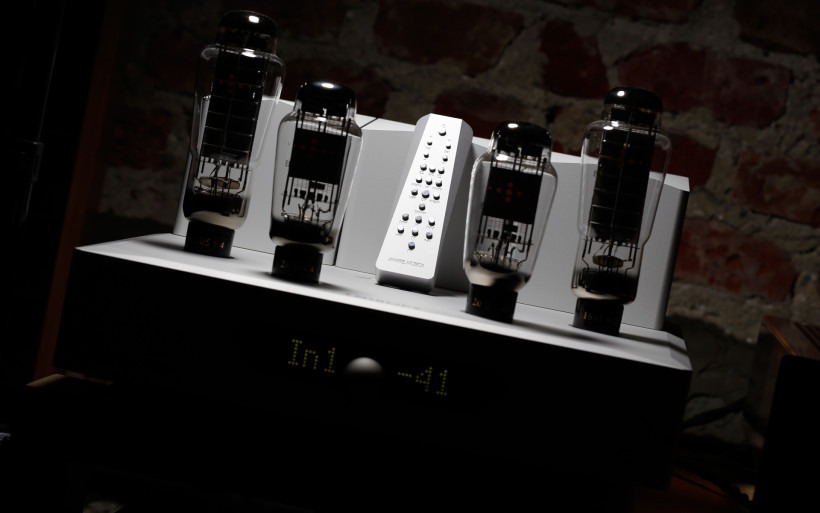 This might sound a bit on the trivial side, yet I strongly believe that audio is about passion above all else. It can be a passion for music listening for us regular folks, or music creation at musicians’ end. From a small and soon-to-be proper manufacturer’s side, we have a passion for engineering discoveries, creative process itself, tinkering frenzy or all of it at once. Though this list is much longer. My point is that it’s not about dough in the first place at all. In this hobby, it’s about skilled individuals, their mindset and certain abilities vast majority of us doesn’t possess. The longer this scribe is a part of the journalistic world, the more he understands and witnesses that. Well-aware enthusiasts pay attention not only to sound, design and price, but also to certain engineering ideas and approaches which resonate with their tastes. And behind every idea there’s a human being. Therefore this review is not only about a piece of hardware, but also two gents, who turn it into a thing of grand quality. That’s why they surely deserve broader audience and I’m here to help with this goal. And since their operation is local, call me a patriot if you will.
This might sound a bit on the trivial side, yet I strongly believe that audio is about passion above all else. It can be a passion for music listening for us regular folks, or music creation at musicians’ end. From a small and soon-to-be proper manufacturer’s side, we have a passion for engineering discoveries, creative process itself, tinkering frenzy or all of it at once. Though this list is much longer. My point is that it’s not about dough in the first place at all. In this hobby, it’s about skilled individuals, their mindset and certain abilities vast majority of us doesn’t possess. The longer this scribe is a part of the journalistic world, the more he understands and witnesses that. Well-aware enthusiasts pay attention not only to sound, design and price, but also to certain engineering ideas and approaches which resonate with their tastes. And behind every idea there’s a human being. Therefore this review is not only about a piece of hardware, but also two gents, who turn it into a thing of grand quality. That’s why they surely deserve broader audience and I’m here to help with this goal. And since their operation is local, call me a patriot if you will. Meet Amare Musica audio manufacture, located in Poland’s capital city – Warsaw, and their two and only employees: Marcin Sołowiow and Maciej Lenar. Before we’ll get into Amare Musica operation today, let’s travel several years back. Both Marcin and Maciej were and still are hobbyists above all else. I’ll explain along the road why this is factual. Anyway, their roots are in DIY and they aren’t ashamed of it, on the contrary. They used to exhibit their goods on the Polish Audio Video show (that’s what this event was called no more than two years back) in a DIY Audiostereo.com dedicated room. Said site is the home for the biggest audio community in Poland. In any case, in 2012 Maciej and Marcin showed there their Trinity vacuum tube based mono amplifiers and DeForest preamplifier, also equipped with glowing bulbs. Expensive EMLs loaded and very meticulously crafted devices were a real sight to be seen. Thanks to their mirror alike steel enclosures, surgeons’ wet dreams came to life in that particular DIY room in 2012. That’s a given.
Meet Amare Musica audio manufacture, located in Poland’s capital city – Warsaw, and their two and only employees: Marcin Sołowiow and Maciej Lenar. Before we’ll get into Amare Musica operation today, let’s travel several years back. Both Marcin and Maciej were and still are hobbyists above all else. I’ll explain along the road why this is factual. Anyway, their roots are in DIY and they aren’t ashamed of it, on the contrary. They used to exhibit their goods on the Polish Audio Video show (that’s what this event was called no more than two years back) in a DIY Audiostereo.com dedicated room. Said site is the home for the biggest audio community in Poland. In any case, in 2012 Maciej and Marcin showed there their Trinity vacuum tube based mono amplifiers and DeForest preamplifier, also equipped with glowing bulbs. Expensive EMLs loaded and very meticulously crafted devices were a real sight to be seen. Thanks to their mirror alike steel enclosures, surgeons’ wet dreams came to life in that particular DIY room in 2012. That’s a given. Said setup was matched with Polish Clockwork speakers and the outcome was very good. Consider this as the full-fledged Amare Musica company debut. Fast forward three years and boom, our gents do audio for a living and nothing else. No daily routine and audio tinkering after hours anymore. Now it’s the full-time job for these two lads. They progress and evolve, that’s the constantly changing factor. Yet some things remain the same, even though it’s been quite a while since they decided to do what they do on a daily and hourly basis. “Which things?”, you may ask. Well, Maciej and Marcin are fanatics, in a good sense of that descriptive word. They have to be. First of all, both gents are engineers by a profession. Their previous work involved electronics, so to make Amare Musica come to life wasn’t a random decision. They possess skills that allow them to be literally self-sufficient. Yes, semi-products are outsourced. Yet what they can, they do all by themselves in a rather small workshop somewhere in Warsaw’s Ursynów district. Not only assembly, that’s the easy part.
Said setup was matched with Polish Clockwork speakers and the outcome was very good. Consider this as the full-fledged Amare Musica company debut. Fast forward three years and boom, our gents do audio for a living and nothing else. No daily routine and audio tinkering after hours anymore. Now it’s the full-time job for these two lads. They progress and evolve, that’s the constantly changing factor. Yet some things remain the same, even though it’s been quite a while since they decided to do what they do on a daily and hourly basis. “Which things?”, you may ask. Well, Maciej and Marcin are fanatics, in a good sense of that descriptive word. They have to be. First of all, both gents are engineers by a profession. Their previous work involved electronics, so to make Amare Musica come to life wasn’t a random decision. They possess skills that allow them to be literally self-sufficient. Yes, semi-products are outsourced. Yet what they can, they do all by themselves in a rather small workshop somewhere in Warsaw’s Ursynów district. Not only assembly, that’s the easy part.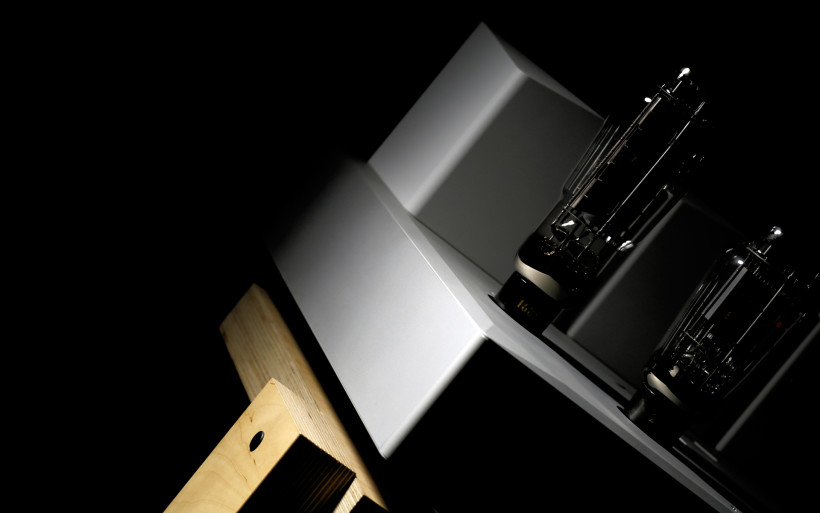 Picture Solidworks app, Marcin handles that. He creates 3D models with the help of this very software, he needs to see it there at first, check if everything is dandy and then, once things are as intended, the manufacturing kicks-off. Hence Amare Musica devices’ looks is his work too. Said company’s visionary man then? It appears that that’s the case. He’s also swift with code, programming is something he also does. To give a perfect example, this company’s Tube DAC DSD exploits Amanero USB receiver. But once it’s connected with a PC/laptop, one’s eyes won’t see a regular Combo384 input device on the Foobar2000’s list, no sir, but Amare Musica DAC writing instead. That’s a small yet highly convenient trick at the user’s end. I was informed that several other things have been changed in this Italian receiver according to his needs, but we won’t jump onto that wagon in this review.
Picture Solidworks app, Marcin handles that. He creates 3D models with the help of this very software, he needs to see it there at first, check if everything is dandy and then, once things are as intended, the manufacturing kicks-off. Hence Amare Musica devices’ looks is his work too. Said company’s visionary man then? It appears that that’s the case. He’s also swift with code, programming is something he also does. To give a perfect example, this company’s Tube DAC DSD exploits Amanero USB receiver. But once it’s connected with a PC/laptop, one’s eyes won’t see a regular Combo384 input device on the Foobar2000’s list, no sir, but Amare Musica DAC writing instead. That’s a small yet highly convenient trick at the user’s end. I was informed that several other things have been changed in this Italian receiver according to his needs, but we won’t jump onto that wagon in this review. Moving on, Marcin is a perfect example of a multi-tasking freak. Why not, from financial standpoint savings are on the horizon. The company doesn’t have to make another employee fiscally viable, if our gent can pull off many things on his own. It makes a perfect sense, doesn’t it? But it’s not about that, at least so I’ve been told. Marcin is also a perfectionist, that’s undeniable. Below I’ll introduce more proofs to make it more understandable and convincing, as there are many. But it’s known that some people simply like to know the outcome before it happens. And the best way to do that is to take personal interest and control over the creation, manufacturing and assembly processes. Let’s summarize then. A 3D artist, a programmer, an audiophile (as another Sven Boenicke’s W5 owner, that’s rather obvious), a perfectionist…. heck, Marcin is even into martial arts.
Moving on, Marcin is a perfect example of a multi-tasking freak. Why not, from financial standpoint savings are on the horizon. The company doesn’t have to make another employee fiscally viable, if our gent can pull off many things on his own. It makes a perfect sense, doesn’t it? But it’s not about that, at least so I’ve been told. Marcin is also a perfectionist, that’s undeniable. Below I’ll introduce more proofs to make it more understandable and convincing, as there are many. But it’s known that some people simply like to know the outcome before it happens. And the best way to do that is to take personal interest and control over the creation, manufacturing and assembly processes. Let’s summarize then. A 3D artist, a programmer, an audiophile (as another Sven Boenicke’s W5 owner, that’s rather obvious), a perfectionist…. heck, Marcin is even into martial arts.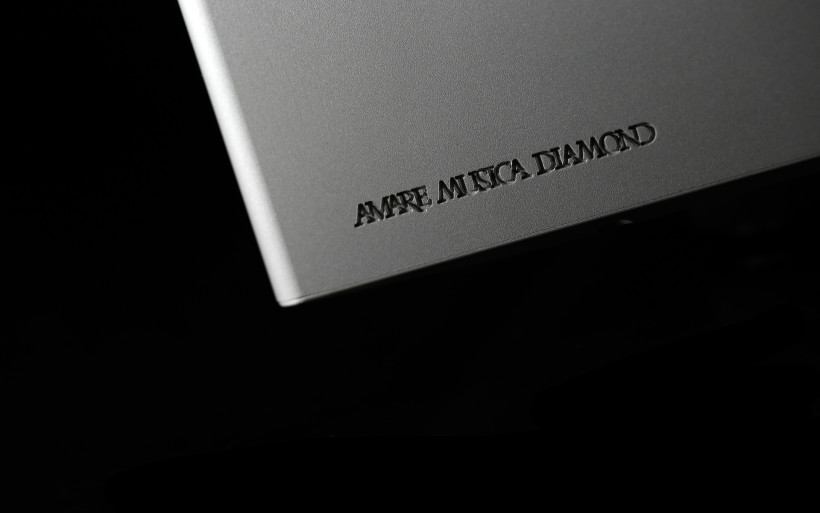 And there’s the second half of our two men operation. Maciej is the silent type. He talks in tech language above my not too shabby understanding of it. When someone mentions that he’s into Nelson Pass work, there’s a high probability that he’s heard somewhere that Pass Labs amps are good and… that’s it. This mantra can be safely repeated among enthusiasts as most of them is aware that this is about right, eh? But when Mr Lenar started his speech about FirstWatt F7 and I got a bit lost, even though being quite aware of what’s going on under said power amp’s hood and how things work in there, then yeah, this gent obviously knows more than a thing or two about transistor shenanigans. Let’s not even start about valves, Maciej is into these photogenic bulbs too. And judging by how Amare Musica device’s internals are assembled, he’s a perfectionist as well. This is his task after all. No surprise then that our two obviously like-minded individuals get along perfectly fine for many years. And from this journalist’s standpoint, M&M approach is highly convincing. To talk to them is to know. No marketing bullshit attitude is something I’ve noticed after mere minutes of our introductory chat. Just plain facts. “We do this, because of that, and that is done like this because of this, this and that”… and so on, so forth. Let me kindly return the upfront courtesy then. Tasty story described above is the very reason why Amare Musica two men crew had not only my curiosity, but also full attention. Now picture yourself in my shoes. Wouldn’t you be very interested to personally check what’s what?
And there’s the second half of our two men operation. Maciej is the silent type. He talks in tech language above my not too shabby understanding of it. When someone mentions that he’s into Nelson Pass work, there’s a high probability that he’s heard somewhere that Pass Labs amps are good and… that’s it. This mantra can be safely repeated among enthusiasts as most of them is aware that this is about right, eh? But when Mr Lenar started his speech about FirstWatt F7 and I got a bit lost, even though being quite aware of what’s going on under said power amp’s hood and how things work in there, then yeah, this gent obviously knows more than a thing or two about transistor shenanigans. Let’s not even start about valves, Maciej is into these photogenic bulbs too. And judging by how Amare Musica device’s internals are assembled, he’s a perfectionist as well. This is his task after all. No surprise then that our two obviously like-minded individuals get along perfectly fine for many years. And from this journalist’s standpoint, M&M approach is highly convincing. To talk to them is to know. No marketing bullshit attitude is something I’ve noticed after mere minutes of our introductory chat. Just plain facts. “We do this, because of that, and that is done like this because of this, this and that”… and so on, so forth. Let me kindly return the upfront courtesy then. Tasty story described above is the very reason why Amare Musica two men crew had not only my curiosity, but also full attention. Now picture yourself in my shoes. Wouldn’t you be very interested to personally check what’s what?
Build
Before we’ll get into Entropy Diamond part, let’s take a look at Amare Musica offeing. It’s quite extensive, in a sense that both analog and digital domains are covered, yet by several models and not dozens of ’em. The Tube DAC DSD and soon-to-be-released DHT DAC fulfil source duties, whereas Music and Mini Music servers handle transport. Ad Aspiriaa phonostage, Trinity monos, DeForest preamplifier, this review’s hero – Entropy – and that’s it. All of these machines belong to the Diamond family. A quick glimpse at each separately easily shows why. Somewhat diamond alike enclosure is one of Amare Musica’s latest line-up trademarks. The takeaway of this paragraph is that one can assemble nearly whole Polish setup, what’s left to add is either a turntable, a PC/laptop and a pair of speakers. This review’s initial plan was to throw a Tube DAC DSD to the mix, but I’ve been curious mainly about amplifier. And to compare said €3’500 source to my €18’000 LampizatOr Golden Gate is not the best way to measure its performance. If I had to do it I would, yet there was no need this time to prepare this kind of a battle.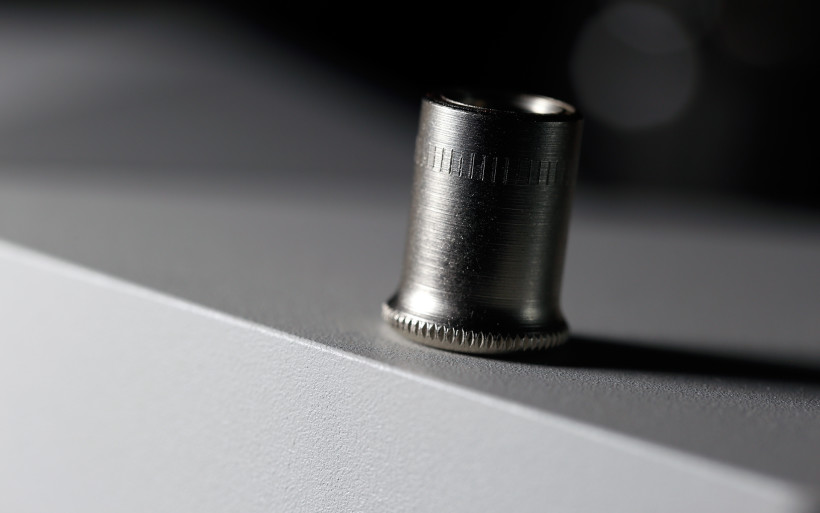 Amare Musica Entropy is an integrated amplifier, therefore a stereo power amplifier shares one chassis with preamplification stage. And a fine enclosure it is, damn. Just take a look at the pictures in this review and imagine that in real life things are even better. But before we’ll get into this tasty part, a word about naming and specs. Entropy is i.e. a measure of the disorder or randomness in a closed system. This doesn’t sound too good for our integrated, does it? So is an inevitable and steady deterioration of a system or society. Though in the audio spectrum, the worst surely is a measure of the loss in a transmitted signal. “Wait, what? Signal loss, you say?”. This one really stings. Ouch. But, to be honest, Entropy as a name is subjectively really cool. It sounds rather dark. Past testing phase the situation became even more interesting as the last thing to think about said device was any kind of information inconsistency or loss. So maybe it’s about mockery then, hm? Loss etc. related to a name given, yet the opposite effect? I have no idea, it is what it is. And what is… is good. Simple as that.
Amare Musica Entropy is an integrated amplifier, therefore a stereo power amplifier shares one chassis with preamplification stage. And a fine enclosure it is, damn. Just take a look at the pictures in this review and imagine that in real life things are even better. But before we’ll get into this tasty part, a word about naming and specs. Entropy is i.e. a measure of the disorder or randomness in a closed system. This doesn’t sound too good for our integrated, does it? So is an inevitable and steady deterioration of a system or society. Though in the audio spectrum, the worst surely is a measure of the loss in a transmitted signal. “Wait, what? Signal loss, you say?”. This one really stings. Ouch. But, to be honest, Entropy as a name is subjectively really cool. It sounds rather dark. Past testing phase the situation became even more interesting as the last thing to think about said device was any kind of information inconsistency or loss. So maybe it’s about mockery then, hm? Loss etc. related to a name given, yet the opposite effect? I have no idea, it is what it is. And what is… is good. Simple as that. As far as Entropy Diamond specs go, we have a single-ended affair, which operates in pure class A. One Emission Labs 1605 V4 triode per channel sits at our machine’s output, whereas 20B bulbs from the same manufacturer serve as drivers to these. The former is 300B’s cousin, yet stronger; of higher gain and voltage. In Trinity monos, EML 5U4G is used as a rectifier. Though in Entropy there was no room for valve based rectification, this task is handled by a silicone. 23W make the 1605 V4 bulb the biggest DHT in EML’s offer. At this point it’s seen that Entropy Diamond is a DHT product nearly all the way, as Amare Musica guys wanted to make devices which exploit this kind of kosher glass from the very beginning. There were no ifs and buts, just a precise goal to accomplish. And hard to pull off as DHTs are picky, to tame their microphonic properties is a major PITA. Since we’re at EML stop, Entropy Diamond is sold with these as a stock option. That’s lots of Euros already. Lots. Who’d ask for anything else if these valves are served as a standard feature? Moving on, Entropy Diamond sports 23W per channel and its input impedance is 50 kΩ. This device is heavy, one’s back will surely feel 38 kilograms. And rather big, 430 x 425 x 310 mm measurements of W x D x H speak for themselves. The product looks regular, which means flat base, four tubes on it’s top and three cube alike blocks with silver windings based transformers inside. Nothing completely new here, yet not that ordinary as well. And the devil is in the usual suspects, details that is.
As far as Entropy Diamond specs go, we have a single-ended affair, which operates in pure class A. One Emission Labs 1605 V4 triode per channel sits at our machine’s output, whereas 20B bulbs from the same manufacturer serve as drivers to these. The former is 300B’s cousin, yet stronger; of higher gain and voltage. In Trinity monos, EML 5U4G is used as a rectifier. Though in Entropy there was no room for valve based rectification, this task is handled by a silicone. 23W make the 1605 V4 bulb the biggest DHT in EML’s offer. At this point it’s seen that Entropy Diamond is a DHT product nearly all the way, as Amare Musica guys wanted to make devices which exploit this kind of kosher glass from the very beginning. There were no ifs and buts, just a precise goal to accomplish. And hard to pull off as DHTs are picky, to tame their microphonic properties is a major PITA. Since we’re at EML stop, Entropy Diamond is sold with these as a stock option. That’s lots of Euros already. Lots. Who’d ask for anything else if these valves are served as a standard feature? Moving on, Entropy Diamond sports 23W per channel and its input impedance is 50 kΩ. This device is heavy, one’s back will surely feel 38 kilograms. And rather big, 430 x 425 x 310 mm measurements of W x D x H speak for themselves. The product looks regular, which means flat base, four tubes on it’s top and three cube alike blocks with silver windings based transformers inside. Nothing completely new here, yet not that ordinary as well. And the devil is in the usual suspects, details that is.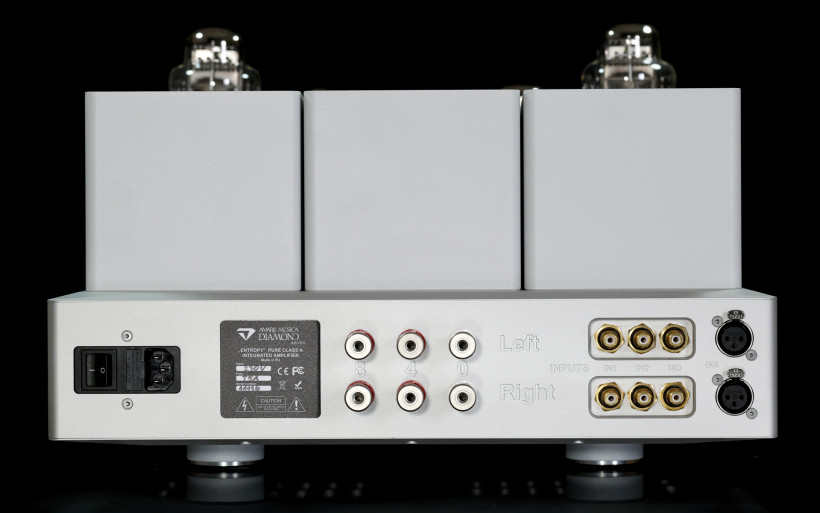 The Entropy Diamond doesn’t have many things in common with its predecessor. Marcin told me that the former has both output and driver tubes stabilized. The whole amplifier circuitry has been rebuilt in the process and the same story goes with discrete power supplies, each channel has its own. Once the product is turned on and off, its counter ticks. This delay makes valves’ lives longer, therefore safer and surely happier in the process. Attention to details, yes? Our device’s innards are placed on one PCB. Among visible parts there is i.e. Lundahl transformer, resistor ladder based volume control, chokes in driver tubes’ load and Jensen Copper Foil PIO capacitors. Each channel has its own discrete power supply. Entropy Diamond’s inside is a very clean job, that’s a world-class performer in that regard. But what about the outside?
The Entropy Diamond doesn’t have many things in common with its predecessor. Marcin told me that the former has both output and driver tubes stabilized. The whole amplifier circuitry has been rebuilt in the process and the same story goes with discrete power supplies, each channel has its own. Once the product is turned on and off, its counter ticks. This delay makes valves’ lives longer, therefore safer and surely happier in the process. Attention to details, yes? Our device’s innards are placed on one PCB. Among visible parts there is i.e. Lundahl transformer, resistor ladder based volume control, chokes in driver tubes’ load and Jensen Copper Foil PIO capacitors. Each channel has its own discrete power supply. Entropy Diamond’s inside is a very clean job, that’s a world-class performer in that regard. But what about the outside?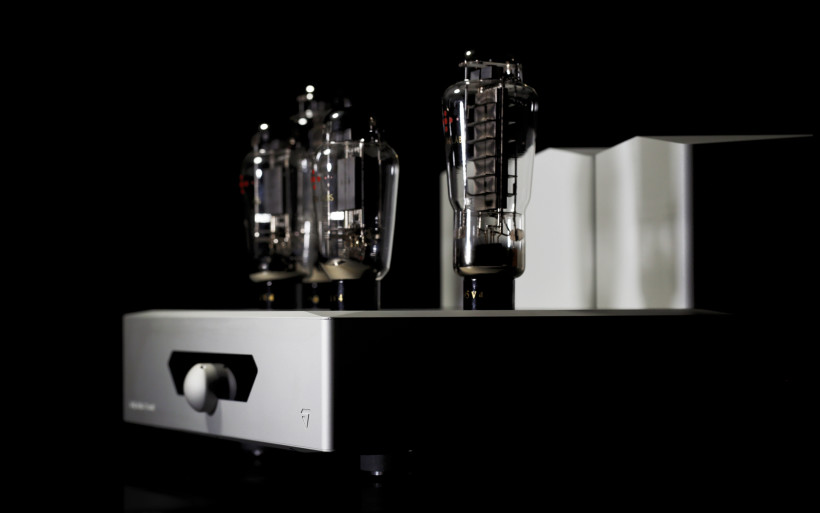 Ah, Entropy Diamond chassis, here’s where things are exceptionally tasty. This product’s previous version was glossy, its enclosure looked pricey, yet slightly on the DIY side if someone asks me. Diamond version is aluminum all the way, executed in good ol’ CNC fashion. It screams money and looks very professional. If one thinks that true hi-end audio device has to cost a ton of money, nearly six figures and above, Entropy Diamond serves as a perfect reality check tool. It’s unbelievably well-made. CNC milling provides precision, but the assembly is in engineering hands. And here Amare Musica duo triumphs, its integrated looks and feels complete. Every part, be it a screw, a socket or a surface is matched perfectly one with another. Why diamond, you ask? Please take a look at product’s nicely and evenly trimmed edges, there’s your answer. The same story goes with transformers’ enclosures. Pleasant cuts on their top surfaces match our machine’s visual scheme. One may or may not like Entropy Diamond appeal, but objectively it is a coherent one indeed. Also said machine’s paint job is proper, though product’s silver base is a bit darker than almost white monoliths mounted on its top. That’s on purpose, the same thing Hegel did with its latest Rost integrated. Two and not fifty shades of gray make an outcome more three-dimensional and appealing, yet not kinky or unfinished. Needless to say, this trick works very well with Entropy Diamond’s look.
Ah, Entropy Diamond chassis, here’s where things are exceptionally tasty. This product’s previous version was glossy, its enclosure looked pricey, yet slightly on the DIY side if someone asks me. Diamond version is aluminum all the way, executed in good ol’ CNC fashion. It screams money and looks very professional. If one thinks that true hi-end audio device has to cost a ton of money, nearly six figures and above, Entropy Diamond serves as a perfect reality check tool. It’s unbelievably well-made. CNC milling provides precision, but the assembly is in engineering hands. And here Amare Musica duo triumphs, its integrated looks and feels complete. Every part, be it a screw, a socket or a surface is matched perfectly one with another. Why diamond, you ask? Please take a look at product’s nicely and evenly trimmed edges, there’s your answer. The same story goes with transformers’ enclosures. Pleasant cuts on their top surfaces match our machine’s visual scheme. One may or may not like Entropy Diamond appeal, but objectively it is a coherent one indeed. Also said machine’s paint job is proper, though product’s silver base is a bit darker than almost white monoliths mounted on its top. That’s on purpose, the same thing Hegel did with its latest Rost integrated. Two and not fifty shades of gray make an outcome more three-dimensional and appealing, yet not kinky or unfinished. Needless to say, this trick works very well with Entropy Diamond’s look.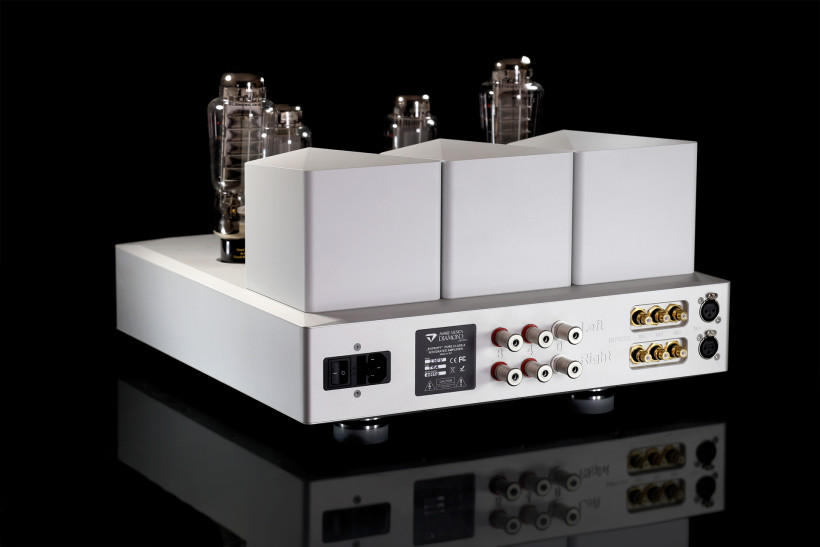 CNC machined and perfectly executed Entropy Diamond chassis aside, attention to details is stunning, the same story is with used parts. The device sits on four Franc Audio Accesories ceramic discs. A marvelous and diamond shaped LED matrix display is to be found on its front. It is readable even if the sun shines directly on it. All marks visible there are made out of green dots. The volume knob is mounted in it’s center and works very well, audible clicks give the proper resistor ladder impression, that’s unbeatable. On the Entropy Diamond’s front there’s also the Amare Musica logo and nothing else. Here’s why, Marcin dislikes buttons and knobs in general. And because of this reason, he decided to put an extra effort and make said knob clickable. Press it once and nothing happens, but do that twice and input selection becomes available. Three presses make a short yet dandy menu accessible. Here one can adjust display brightness (10 to 100% range), program volume function into a non-proprietary RC and check tubes’ wear counter, their running time in hours is the visible outcome.
CNC machined and perfectly executed Entropy Diamond chassis aside, attention to details is stunning, the same story is with used parts. The device sits on four Franc Audio Accesories ceramic discs. A marvelous and diamond shaped LED matrix display is to be found on its front. It is readable even if the sun shines directly on it. All marks visible there are made out of green dots. The volume knob is mounted in it’s center and works very well, audible clicks give the proper resistor ladder impression, that’s unbeatable. On the Entropy Diamond’s front there’s also the Amare Musica logo and nothing else. Here’s why, Marcin dislikes buttons and knobs in general. And because of this reason, he decided to put an extra effort and make said knob clickable. Press it once and nothing happens, but do that twice and input selection becomes available. Three presses make a short yet dandy menu accessible. Here one can adjust display brightness (10 to 100% range), program volume function into a non-proprietary RC and check tubes’ wear counter, their running time in hours is the visible outcome.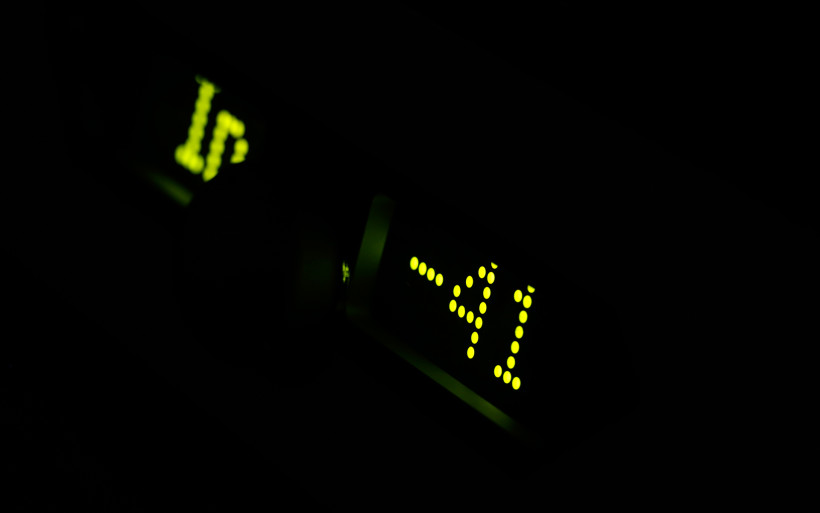 Moving on, every tube sits in a teflon socket. These are rather pricey and difficult to work with, yet are marvelous isolators, hence handy to use in a product of Entropy Diamond sort. On its back there are four inputs in total; 3 x RCA and one XLR. That’s more than enough. Single-ended ones come from USA based Vampire Wire. Next there are two rows of robust and well-made WBT speaker terminals, six of these is seen in total (0 + 4 and 8Ω). A bit to the left there’s a nameplate and Schurter IEC socket. That’s it. The last thing to cover is a RC included in the package. This is one finely made, perfectly operational and robust unit. It’s body is also aluminium and loaded with lots of buttons. If a happy Entropy Diamond user decides to buy Amare Musica transport, he’s already stocked with a tool to operate ’em both. To summarize, the sheer cost of our integrated’s semi-components directly suggests that it’s in fact unusually pricey to make, that goes rather without saying. To take a look at how well it’s made and how predictably and stable it behaves is to know. This is a rare case of a world-class execution level, no compromise attitude and not that awfully steep asking once the overall package is taken into consideration. Such statements should go into summary, but let me repeat myself again; it’s a rarity to see a piece of hardware this well-made.
Moving on, every tube sits in a teflon socket. These are rather pricey and difficult to work with, yet are marvelous isolators, hence handy to use in a product of Entropy Diamond sort. On its back there are four inputs in total; 3 x RCA and one XLR. That’s more than enough. Single-ended ones come from USA based Vampire Wire. Next there are two rows of robust and well-made WBT speaker terminals, six of these is seen in total (0 + 4 and 8Ω). A bit to the left there’s a nameplate and Schurter IEC socket. That’s it. The last thing to cover is a RC included in the package. This is one finely made, perfectly operational and robust unit. It’s body is also aluminium and loaded with lots of buttons. If a happy Entropy Diamond user decides to buy Amare Musica transport, he’s already stocked with a tool to operate ’em both. To summarize, the sheer cost of our integrated’s semi-components directly suggests that it’s in fact unusually pricey to make, that goes rather without saying. To take a look at how well it’s made and how predictably and stable it behaves is to know. This is a rare case of a world-class execution level, no compromise attitude and not that awfully steep asking once the overall package is taken into consideration. Such statements should go into summary, but let me repeat myself again; it’s a rarity to see a piece of hardware this well-made.
Sound
In order to check what’s what in Entropy Diamond case, as per usual, several things had to be done. This is an unusual amplifier to begin with, it supposedly shouldn’t be matched with hard loads. The most suitable company for it is a high efficiency product, that’s both mandatory and unavoidable. And here’s the place where our adventure starts. Behold, Voxativ Zeth speakers, theoretically a perfect pair. But having Boenicke W8, wouldn’t you be curious what will happen? After these speakers and 25WPC FirstWatt F7 combo I surely was. The rest of the setup was as usual. LampizatOr Golden Gate (4 x Psvane WE101D-L + KR Audio 5U4G ltd.) handled source duties, whereas Asus UX305LA served as a transport. Lumin A1 fulfilled the same role at times, it depended on this reviewer’s mood and needs.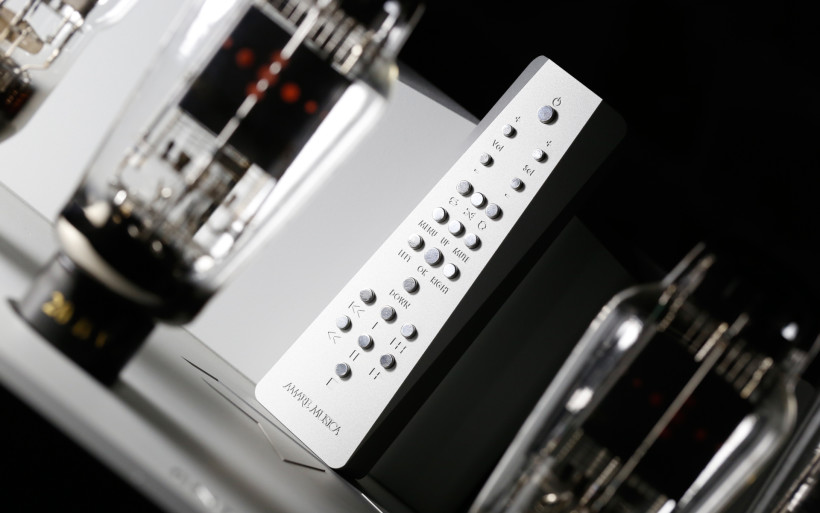 Polish integrated was matched with Voxativ’s Zeth floorstanders at first. A word about these speakers is in order. Holger Adler’s latest widebander and transmission line loaded product is very picky to work with, has many limitations and without proper understanding of what it represents, does and needs, one won’t be able to achieve a proper outcome. And even if so, I tend to think that only by a fortunate stroke of luck. Actually, said speakers are the very reason why Amare Musica Entropy Diamond was delivered to yours truly. If I hadn’t had Zeth on hand, I wouldn’t be able to properly review this integrated. It’s highly probable that you’d see a different Amare Musica writing instead. Said German speakers’ case is very interesting, a rather extensive one and will be properly introduced in one of upcoming materials by this author.
Polish integrated was matched with Voxativ’s Zeth floorstanders at first. A word about these speakers is in order. Holger Adler’s latest widebander and transmission line loaded product is very picky to work with, has many limitations and without proper understanding of what it represents, does and needs, one won’t be able to achieve a proper outcome. And even if so, I tend to think that only by a fortunate stroke of luck. Actually, said speakers are the very reason why Amare Musica Entropy Diamond was delivered to yours truly. If I hadn’t had Zeth on hand, I wouldn’t be able to properly review this integrated. It’s highly probable that you’d see a different Amare Musica writing instead. Said German speakers’ case is very interesting, a rather extensive one and will be properly introduced in one of upcoming materials by this author.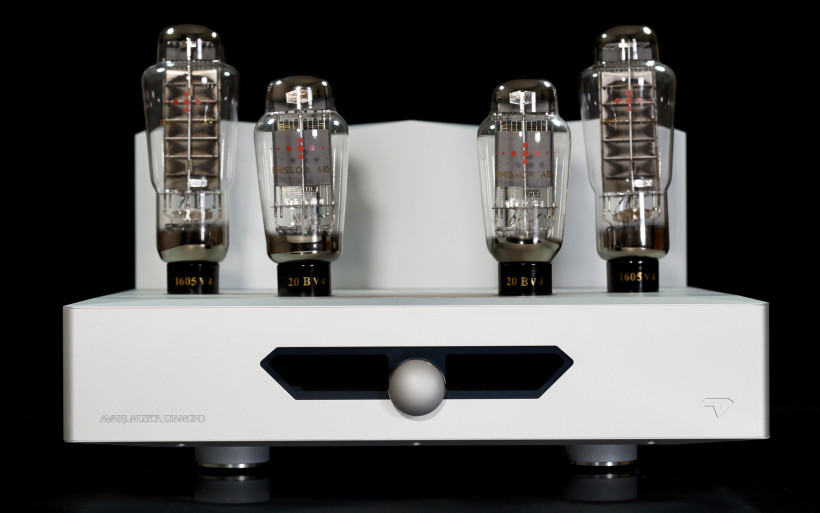 Let’s kick-off with this simple statement – Voxativ Zeth speakers need tube based amplifiers the most. Once these were handed to me past local Audio Video Show, the initial thought was that FirstWatt F7 should do the trick. 25WPC of pure Nelson Pass’ class A amplification is pleasantly dense. At this point I was perfectly aware that Voxativ widebanders enjoy thick company, therefore this should have been an interesting, synergistic marriage. If it wasn’t for said American power amp among my tools, Zeth assignment wouldn’t have been possible at all, at least that’s what I thought back then. So there I was, with the right set of speakers and the supposedly right amp for the job. The outcome? It simply didn’t work. Extensive bass roll-off and lack of body were the fundamental reasons. Thin sound out of $9’900 speakers? Something was clearly off. When one doesn’t know where to look for a culprit, it’s for the best to start within his own four walls and that’s what I did. My audio cave has been rearranged and the speakers were moved extensively, but no breakthrough happened. And it was badly needed. Moving on, a DAC swap? Nope, the outcome got even worse. Cables perhaps? A little improvement yet of a very minor significance. An amplifier? Every model I had back then (Trilogy 925, FirstWatt 925, Cary Audio SI300-2.d, Sanders Sound Systems Magtech amp + pre combo) netted about the same poor results. Surprised? I surely was, strongly convinced that at least one out of four will stand out of the crowd, namely be able to get along with Zeth. Moving on, bulbs weren’t there, all aforementioned amplifiers are of transistor sort, one of ’em is hybrid. Then Amare Musica guys reached out, Entropy Diamond integrated was delivered and the German speakers finally sang as expected.
Let’s kick-off with this simple statement – Voxativ Zeth speakers need tube based amplifiers the most. Once these were handed to me past local Audio Video Show, the initial thought was that FirstWatt F7 should do the trick. 25WPC of pure Nelson Pass’ class A amplification is pleasantly dense. At this point I was perfectly aware that Voxativ widebanders enjoy thick company, therefore this should have been an interesting, synergistic marriage. If it wasn’t for said American power amp among my tools, Zeth assignment wouldn’t have been possible at all, at least that’s what I thought back then. So there I was, with the right set of speakers and the supposedly right amp for the job. The outcome? It simply didn’t work. Extensive bass roll-off and lack of body were the fundamental reasons. Thin sound out of $9’900 speakers? Something was clearly off. When one doesn’t know where to look for a culprit, it’s for the best to start within his own four walls and that’s what I did. My audio cave has been rearranged and the speakers were moved extensively, but no breakthrough happened. And it was badly needed. Moving on, a DAC swap? Nope, the outcome got even worse. Cables perhaps? A little improvement yet of a very minor significance. An amplifier? Every model I had back then (Trilogy 925, FirstWatt 925, Cary Audio SI300-2.d, Sanders Sound Systems Magtech amp + pre combo) netted about the same poor results. Surprised? I surely was, strongly convinced that at least one out of four will stand out of the crowd, namely be able to get along with Zeth. Moving on, bulbs weren’t there, all aforementioned amplifiers are of transistor sort, one of ’em is hybrid. Then Amare Musica guys reached out, Entropy Diamond integrated was delivered and the German speakers finally sang as expected. By singing as expected one should understand generous density. That was one of the main issues. But in Entropy Diamond’s case, its thickness doesn’t go in one bag with fuzziness or way too hot atmosphere in general. On the contrary, the way it presents the music is very differentiated. Oftentimes it can be a bit on the stiffer side, just to be pleasantly rounded mere minutes later. The main impression I got with this integrated and Zeth was the ability to show different recordings’ mastering properties. For some people this is the very reason for having a nice stereo setup at home, to simply know what there is to know about favorite tracks. Yet this rather surgical approach usually sucks life out of music. But not Entropy Diamond and that’s one of this integrated’s many strengths. Even while giving a listener an insight into recording, it does it graciously. The last thing that can be said about this product is that it takes away the joy and brings hollowness instead. So to summarize, Entropy Diamond provides both; recording knowledge and vivid factor, that’s the takeaway.
By singing as expected one should understand generous density. That was one of the main issues. But in Entropy Diamond’s case, its thickness doesn’t go in one bag with fuzziness or way too hot atmosphere in general. On the contrary, the way it presents the music is very differentiated. Oftentimes it can be a bit on the stiffer side, just to be pleasantly rounded mere minutes later. The main impression I got with this integrated and Zeth was the ability to show different recordings’ mastering properties. For some people this is the very reason for having a nice stereo setup at home, to simply know what there is to know about favorite tracks. Yet this rather surgical approach usually sucks life out of music. But not Entropy Diamond and that’s one of this integrated’s many strengths. Even while giving a listener an insight into recording, it does it graciously. The last thing that can be said about this product is that it takes away the joy and brings hollowness instead. So to summarize, Entropy Diamond provides both; recording knowledge and vivid factor, that’s the takeaway. It’s often said that vacuum tube amplifiers favor midrange above all else. Yours truly can concur with this statement to some extent. Yet Entropy Diamond seems to be different in that regard. Yes, it has marvelous midrange. Yet I’m hesitant to describe it as a key FR part. Bass gets along with it nicely, the same story is with highs, though these are just slightly trimmed. Voxativ Zeth sound is not only thin with mismatched company, but also lit-up. Entropy Diamond tames that perfectly. High frequencies have long decay, proper weight and are texturally differentiated. There’s no room to complain to be honest, the quality is easily heard. Midrange performs grand as well. Not only it’s very saturated, but also clear, though – as previously stated – it changes it’s character from one track to another. My point is that it can be withdrawn, somewhat hid into the soundstage, or brought up closer to a listener. Yet its texturing and wet-alike character is always present.
It’s often said that vacuum tube amplifiers favor midrange above all else. Yours truly can concur with this statement to some extent. Yet Entropy Diamond seems to be different in that regard. Yes, it has marvelous midrange. Yet I’m hesitant to describe it as a key FR part. Bass gets along with it nicely, the same story is with highs, though these are just slightly trimmed. Voxativ Zeth sound is not only thin with mismatched company, but also lit-up. Entropy Diamond tames that perfectly. High frequencies have long decay, proper weight and are texturally differentiated. There’s no room to complain to be honest, the quality is easily heard. Midrange performs grand as well. Not only it’s very saturated, but also clear, though – as previously stated – it changes it’s character from one track to another. My point is that it can be withdrawn, somewhat hid into the soundstage, or brought up closer to a listener. Yet its texturing and wet-alike character is always present. Moving on with FR dissection, downstairs department is simply marvelous. Zeth speakers aren’t generous in that regard with the usual amplification suspects, yet the amount Entropy Diamond is able to show is remarkable. that’s the place where the day and night difference is. Low end extension is fairly limited, that’s Zeth input, though exceptionally well-controlled and – when needed – pleasantly stiff. And accuracy is always a part of the package. It’s rather hard to not witness Polish integrated’s muscle abilities, it’s control over load given. The sensation of strong grip over music is always there. At times it’s masked by density, yet shown when needed. And that grand feature alone is the very reason why Zeth’s bass on thinner side isn’t an issue at all most of the time, of course past accommodation phase. Point being, Entropy Diamond and these speakers’ marriage proves that music can be perfectly enjoyable without strong bass foundation. If everything else works as it should of course, which is the case this time.
Moving on with FR dissection, downstairs department is simply marvelous. Zeth speakers aren’t generous in that regard with the usual amplification suspects, yet the amount Entropy Diamond is able to show is remarkable. that’s the place where the day and night difference is. Low end extension is fairly limited, that’s Zeth input, though exceptionally well-controlled and – when needed – pleasantly stiff. And accuracy is always a part of the package. It’s rather hard to not witness Polish integrated’s muscle abilities, it’s control over load given. The sensation of strong grip over music is always there. At times it’s masked by density, yet shown when needed. And that grand feature alone is the very reason why Zeth’s bass on thinner side isn’t an issue at all most of the time, of course past accommodation phase. Point being, Entropy Diamond and these speakers’ marriage proves that music can be perfectly enjoyable without strong bass foundation. If everything else works as it should of course, which is the case this time.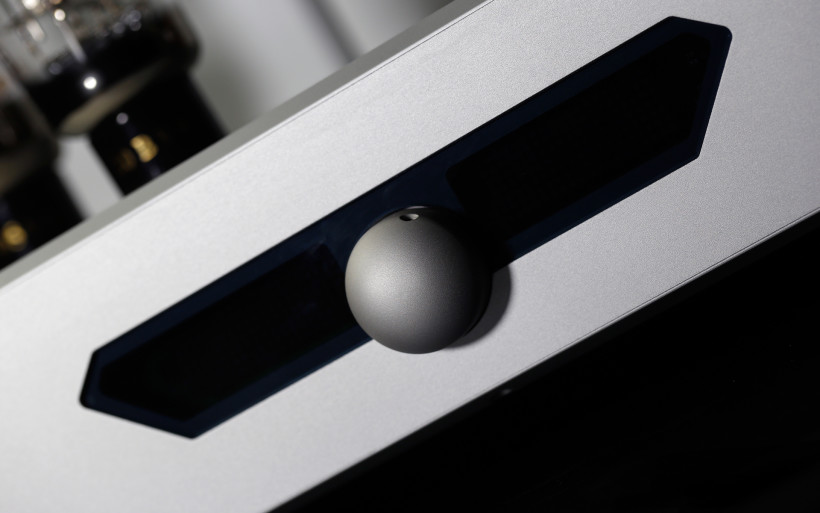 With every transistor amp on hand, German speakers had a difficulty to completely disappear from this reviewer’s listening room. Said situation changed entirely once Entropy Diamond arrived. Not only the speakers weren’t there, but the soundstage their widebanders created was very wide. Yes, the key focus point was between German black boxes still, yet at times it was rather striking how far on both left and right side certain sounds were heard. At this point it wasn’t clear whether this was input of Holger Adler’s speakers or our Amare Musica crew’s integrated solution. Boenicke W8 boxes were meant to verify this, at least to a certain degree. In any case, the Polish and German match sounded spacious, deep and coherent, with generous amount of air around instruments and great layering properties. But the icing on the already tasty cake was the midrange presentation overall, especially vocal parts. This kind of subtle, delicate and smooth sound was thus far unheard within my own four walls. The magic of this sort is what presumably tube aficionados are after and to witness that is to finally understand what all the fuss is about. To summarize, Entropy Diamond showed itself as a strong, dense, airy and spacious performer, able to show every detail in music. And at the same time was capable of music’s great differentiation and extreme subtlety on demand. Overall, a very enjoyable experience thus far.
With every transistor amp on hand, German speakers had a difficulty to completely disappear from this reviewer’s listening room. Said situation changed entirely once Entropy Diamond arrived. Not only the speakers weren’t there, but the soundstage their widebanders created was very wide. Yes, the key focus point was between German black boxes still, yet at times it was rather striking how far on both left and right side certain sounds were heard. At this point it wasn’t clear whether this was input of Holger Adler’s speakers or our Amare Musica crew’s integrated solution. Boenicke W8 boxes were meant to verify this, at least to a certain degree. In any case, the Polish and German match sounded spacious, deep and coherent, with generous amount of air around instruments and great layering properties. But the icing on the already tasty cake was the midrange presentation overall, especially vocal parts. This kind of subtle, delicate and smooth sound was thus far unheard within my own four walls. The magic of this sort is what presumably tube aficionados are after and to witness that is to finally understand what all the fuss is about. To summarize, Entropy Diamond showed itself as a strong, dense, airy and spacious performer, able to show every detail in music. And at the same time was capable of music’s great differentiation and extreme subtlety on demand. Overall, a very enjoyable experience thus far.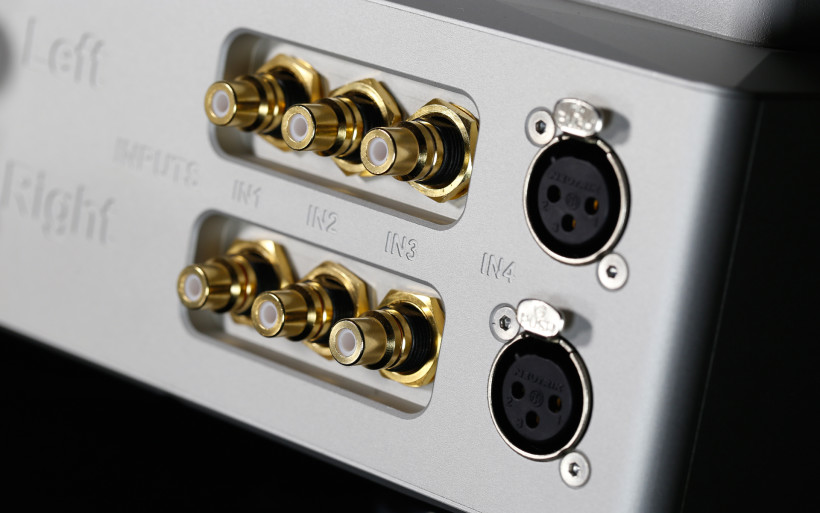 Now was the right time to verify these impressions with the help of Swiss floorstanders. As I’ve stated above, this isn’t the most fortunate Entropy Diamond match out there as W8 is a case of a very demanding load. And that exactly could be heard, a sizable veil appeared in an instant. It was all over the place. That’s thy one simply does not match tube amps of fairly small power with monsters of W8 sort. This is a no go and that’s neither speakers’ nor Polish amplifier’s fault. Some things just weren’t meant to be. But several valuable observations were taken nonetheless. Entropy Diamond showed great authority in Voxativ’s Zeth case and the very same thing could be heard once Swiss boxes took their place instead. Let me clarify here a bit as it’s rather confusing. By authority this review’s author means proper rhythmic value. Yes, Polish integrated and Sven Boenicke’s boxes netted much slower, veiled, bass oriented and therefore darker outcome with trimmed top. But in terms of keeping things tight, the sound was in check to some extent. This description isn’t an attempt to justify such Polish and Swiss combination as it’s a big no overall. It has much more weaknesses than strengths, that’s a given.
Now was the right time to verify these impressions with the help of Swiss floorstanders. As I’ve stated above, this isn’t the most fortunate Entropy Diamond match out there as W8 is a case of a very demanding load. And that exactly could be heard, a sizable veil appeared in an instant. It was all over the place. That’s thy one simply does not match tube amps of fairly small power with monsters of W8 sort. This is a no go and that’s neither speakers’ nor Polish amplifier’s fault. Some things just weren’t meant to be. But several valuable observations were taken nonetheless. Entropy Diamond showed great authority in Voxativ’s Zeth case and the very same thing could be heard once Swiss boxes took their place instead. Let me clarify here a bit as it’s rather confusing. By authority this review’s author means proper rhythmic value. Yes, Polish integrated and Sven Boenicke’s boxes netted much slower, veiled, bass oriented and therefore darker outcome with trimmed top. But in terms of keeping things tight, the sound was in check to some extent. This description isn’t an attempt to justify such Polish and Swiss combination as it’s a big no overall. It has much more weaknesses than strengths, that’s a given. Yet my point is that some of Entropy Diamond’s strengths were heard even in circumstances as dreadful as W8 marriage. The bass was slow, yet not wobbly. In certain lively tracks (picture Peaches and her “Rub” or “Rusty Cage” performed by Johnny Cash himself) it was both served in a timely manner and feisty enough to feel comfortable. Aforementioned combination’s smoothness and texturing were additional features which showed what Entropy is all about. These were also present. And lastly, the scale. Polish integrated can do the so-called big sound even with tough company. W8 model sings enormously big, is able to completely disappear from one’s room and both of these things were a part of the outcome with our Polish integrated amplifier.
Yet my point is that some of Entropy Diamond’s strengths were heard even in circumstances as dreadful as W8 marriage. The bass was slow, yet not wobbly. In certain lively tracks (picture Peaches and her “Rub” or “Rusty Cage” performed by Johnny Cash himself) it was both served in a timely manner and feisty enough to feel comfortable. Aforementioned combination’s smoothness and texturing were additional features which showed what Entropy is all about. These were also present. And lastly, the scale. Polish integrated can do the so-called big sound even with tough company. W8 model sings enormously big, is able to completely disappear from one’s room and both of these things were a part of the outcome with our Polish integrated amplifier.
Summary
This review is far from complete. In order to get properly familiarized with Entropy Diamond, at least one additional pair of suitable speakers should have been used. Sadly, one can work only with what is available on hand. Hence I wasn’t able to build a structure more advanced than it already is from a number of blocks given. But even though, I believe that I was able to some extent grasp what Entropy Diamond really is.
First of all, this is incredibly well-built machine. If you pay attention to rough parts cost, make no mistake, this isn’t one of many cases where mere 10 or 15% of the asking is the exact number. Let alone manufacturing, time spent to solder everything together in proper fashion or EML stock tubes of grand quality, multiply this percentage by three or four at minimum. Amare Musica guys obviously are perfectionists, even Entropy Diamond’s RC shows their attitude. I honestly couldn’t single out even one aspect which could have been done on a level higher than it already is. Many turned out to be implemented much better than expected. Said Polish device looks even more glorious in real life than on the pictures. Very clever menu, silent and predictable operation and microphonics completely tamed indicate that M&M duo aimed with their integrated homework for A+ score and no less. Therefore let me point out again that Entropy Diamond represents a real world class build quality level.
As far as the sound goes, Entropy Diamond is a fine piece of hardware as well. Its positive effect on Voxativ Zeth speakers was tremendous to say the least. Said integrated easily delivered what this journalist’s class A and AB primary suspects couldn’t, even FirstWatt F7. I’m not sure whether this was to be expected or not. But what I do know is that with Zeth model, the midrange of this quality was unheard in my room thus far. Entropy Diamond’s sound is fast, authoritative, clear, smooth, detailed, transparent and thick. Or to put it in even shorter words, it’s a complete package. But a listener’s involvement goes above all else. This polish integrated isn’t a flashy, edgy or overly polite product to listen to, yet very easygoing. Even though this isn’t a machine for everyone (“mere” 23 Watts per channel is the main obstacle) and for every speaker out there, it does everything right. When matched with proper floorstanders or monitors, it will sing beautifully. It’s not for me to say whether Entropy Diamond is the one to go after if you’re in a position to spend €10’500 on an integrated amplifier. But if you really are looking for a product of this kosher sort, I wholeheartedly encourage you to get yourself familiarized with Polish Amare Musica’s Entropy Diamond. Perhaps that’s the one you were after all along. ‘Till next time.
Associated equipment:
- Loudspeakers: Boenicke Audio W8, Voxativ Zeth
- Amplifiers: Trilogy 925, Firstwatt F7, Sanders Sound Sustems Magtech
- Digital source: Lampizator Golden Gate (WE101D-L + 5U4G Ltd. Ed.)
- Transport: Asus UX305LA, Lumin T1
- Interconnects: Forza AudioWorks Noir
- Speaker cable: Harmonix CS-120 Improved
- Power chords: Forza AudioWorks Noir Concept, Gigawatt LC-2 MK2
- Power delivery: Gigawatt PF-2 mk2
- Equipment racks: Lavardin K-Rak
- Music: NativeDSD
- Playback platform: Roon
Retail prices of reviewed components in EU (excl. tax):
- Amare Musica Entropy Diamond: €10’500
Manufacturer: Amare Musica




